Welcome to the tropical paradise of Boracay Island! Have you ever wondered where this stunning island is located? Is it nestled among the far-flung corners of the world or hidden in plain sight? Brace yourself, because we are about to unveil the location of this magnificent gem. Are you ready?
Boracay Island is nestled in the Western Visayas region of the beautiful Philippines. Just imagine basking in the sun and indulging in the crystal-clear waters of this tropical haven. But wait, there’s more! The island is located approximately 315 kilometers (200 miles) south of Manila, the bustling capital of the Philippines. It is not too far, nor too close, striking a perfect balance.
Now, here’s a little secret: Boracay Island is situated just 2 kilometers off the northwest tip of the island of Panay. It’s like a hidden paradise waiting to be discovered! This small island, shaped like a barbell, covers a total land area of 10.32 square kilometers (3.98 sq mi). While it may be small in size, it packs a punch when it comes to natural beauty.
Are you ready for the grand reveal? The precise coordinates of Boracay Island are 11°58’8″N 121°55’26″E. Now, you know exactly where to find this tropical paradise on the map!
Key Takeaways:
- Boracay Island is located in the Western Visayas region of the Philippines.
- It is situated approximately 315 kilometers (200 miles) south of Manila.
- The island is just 2 kilometers off the northwest tip of the island of Panay.
- It has a total land area of 10.32 square kilometers (3.98 sq mi) and is shaped like a barbell.
- The coordinates of Boracay Island are 11°58’8″N 121°55’26″E.
Boracay Island Map and Directions
When planning a trip to Boracay Island, it’s essential to know the map and directions to make your journey as smooth as possible. Located in the Western Visayas region of the Philippines, Boracay Island is divided into three barangays: Balabag, Manoc-Manoc, and Yapak.
The main entry and exit point to the island is through the Cagban Jetty Port in Caticlan, which is located across a small strait from the beautiful South-facing Cagban Beach. This is the primary gateway to Boracay, and most visitors arrive here by boat or ferry.
If weather conditions require an alternative entry and exit point, you can use Tambisaan Beach as another option. Keep in mind that the island is only accessible by boat or ferry, so plan your transportation accordingly.
For those traveling by air, there are two airports near Boracay:
- Godofredo P. Ramos Airport (MPH): This airport is the closest to Boracay and offers direct domestic flights from various locations in the Philippines.
- Kalibo International Airport (KLO): If you choose to fly to Kalibo, you will need to take a 1.5 to 2-hour van/bus ride to reach Caticlan, where you can then board a boat or ferry to Boracay Island.
It’s important to plan your travel arrangements in advance and consider the transportation options that best suit your needs and preferences. By understanding the map and directions to Boracay Island, you can ensure a hassle-free journey and make the most of your time in this tropical paradise.
Geography and Surroundings of Boracay Island
Boracay Island, located in the province of Aklan, is a tropical paradise situated in the Western Visayas region of the Philippines. It is nestled in the Sibuyan Sea, surrounded by the Jintotolo Channel, Sulu Sea, and Tablas Strait. With its stunning beaches, crystal-clear waters, and lush greenery, Boracay Island offers a picturesque escape from the everyday hustle and bustle.
The island spans approximately seven kilometers in length and takes the shape of a dog-bone, with a narrow strip connecting two larger portions. This unique geographical formation provides ample opportunities for exploration and relaxation.
Boracay Island is not just a single piece of land; it offers breathtaking views of the surrounding islands and bodies of water. As you bask in the sun and sink your toes into the soft sand, you can also feast your eyes on the beauty of the nearby islands that dot the horizon.
| Surrounding Islands | Location |
|---|---|
| Carabao Island | Southwest of Boracay Island |
| Lapuz-Lapuz Island | North of Boracay Island |
| Crystal Cove Island | Northeast of Boracay Island |
These neighboring islands add to the allure of Boracay, creating a captivating backdrop for your vacation. From panoramic viewpoints to boat tours that take you to these enchanting destinations, the surrounding islands offer a glimpse into the natural wonders of the area.
Whether you prefer snorkeling in the azure waters, kayaking through mangrove forests, or simply soaking up the sun on the beach, Boracay Island provides endless opportunities for adventure and relaxation. Its geography and surroundings make it a haven for water sports enthusiasts and nature lovers alike.
History of Boracay Island
Boracay Island has a fascinating history that spans thousands of years and showcases its rich cultural heritage. Originally inhabited by the indigenous Ati and Tumandok people, the island later came under Spanish colonization in the 16th century. Throughout its history, Boracay has been influenced by various cultures, including Buddhist, Islamic, and Western influences.
In the 1970s, Boracay began to attract tourists and underwent significant development. Its stunning natural beauty and pristine beaches captivated visitors from around the world. However, with the rise in tourism, there also came the need to preserve the island’s cultural heritage and protect its environment.
Efforts have been made in recent years to strike a balance between tourism and sustainability. Boracay Island has implemented measures to safeguard its cultural heritage and promote responsible tourism practices. These initiatives include the preservation of historic sites, the protection of indigenous cultures, and the promotion of eco-friendly activities.
“Boracay’s history is a testament to the island’s resilience and adaptability. It has evolved from a secluded paradise to a global tourist destination while still retaining its cultural identity.”
Boracay continues to grow and evolve, embracing its past while looking towards a sustainable future. Through the conservation of its natural resources and the promotion of responsible tourism, the island strives to ensure that future generations can experience the beauty and cultural heritage that make Boracay truly unique.
Preserving Cultural Heritage
Boracay Island takes pride in its cultural heritage and has implemented various initiatives to preserve its rich traditions and customs. The Ati-atihan festival, held in January, is one of the island’s most significant cultural events. It celebrates the indigenous Ati people and their vibrant culture through colorful parades, traditional music, and dances.
Additionally, the island is home to several historical landmarks and sites that offer a glimpse into its past. These include the Motag Living Museum, which showcases the traditional way of life of the Ati people, and the Yapak Shell Museum, which exhibits an impressive collection of seashells from around the world.
Attractions and Highlights of Boracay Island
Boracay Island is an enchanting destination that offers a multitude of attractions and highlights for travelers to explore. Whether you are seeking a relaxing beach getaway or an adventurous water sports experience, Boracay has something for everyone. Let’s dive into some of the must-visit tourist spots and activities on this tropical paradise.
1. White Beach – A Picture-Perfect Paradise
When it comes to iconic landmarks on Boracay Island, White Beach takes the cake. Stretching over 4 kilometers, this stunning powdery white sand beach is a favorite among locals and tourists alike. The crystal-clear waters and serene atmosphere provide the perfect backdrop for sunbathing, swimming, and leisurely strolls along the shore. Don’t miss the captivating sunsets that paint the sky in hues of pink and orange.
2. Bulabog Beach – A Haven for Water Sports Enthusiasts
If you’re an adrenaline junkie looking for thrills on the water, look no further than Bulabog Beach. Located on the eastern side of the island, this beach is known as the hub for windsurfing and kitesurfing. With its consistent and strong winds, it offers an exhilarating playground for water sports enthusiasts. Whether you’re a seasoned pro or a beginner, Bulabog Beach provides the perfect setting to ride the waves and feel the rush.
3. Puka Shell Beach – Nature’s Gem
For those seeking a tranquil and secluded beach experience, Puka Shell Beach is a hidden gem waiting to be discovered. Located on the northern tip of the island, this beach is known for its abundance of beautiful puka shells. Take a leisurely stroll along the shore, collect unique seashells, and unwind amidst the natural beauty of this pristine beach.
4. Mount Luho – Breathtaking Panoramic Views
If you’re looking to take in the awe-inspiring views of Boracay Island from a higher vantage point, a visit to Mount Luho is a must. At 100 meters above sea level, this elevated viewpoint offers panoramic vistas of the entire island. Gaze out over the turquoise waters, spot neighboring islands in the distance, and capture unforgettable moments against the backdrop of nature’s masterpiece.
5. Exciting Water Activities to Dive Into
Boracay Island is a haven for water sports enthusiasts. Explore the vibrant underwater world through snorkeling or embark on a diving adventure to discover stunning coral reefs and marine life. If you’re looking to explore beyond Boracay, island hopping tours are a popular option, allowing you to visit nearby islands and experience their unique charms.
Whether you’re basking in the sun on White Beach, embracing the thrill of water sports at Bulabog Beach, collecting seashells at Puka Shell Beach, taking in breathtaking views from Mount Luho, or immersing yourself in exciting water activities, Boracay Island promises an unforgettable experience for every traveler.
| Tourist Spot | Description |
|---|---|
| White Beach | A 4-kilometer stretch of powdery white sand and crystal-clear waters. |
| Bulabog Beach | A haven for windsurfing and kitesurfing enthusiasts. |
| Puka Shell Beach | A secluded beach known for its abundance of beautiful puka shells. |
| Mount Luho | An elevated viewpoint offering panoramic views of the island. |
Recognition and Awards of Boracay Island
Boracay Island is globally celebrated for its unparalleled beauty, earning it numerous prestigious accolades and awards. These honors serve as testimonies to the island’s remarkable charm and allure, attracting travelers from all corners of the world. Notably, in 2012, Travel + Leisure bestowed upon Boracay the coveted title of the Best Island in the World. Such recognition from a reputable publication solidified Boracay’s position as a must-visit destination for wanderlust seekers.
Boracay Island continued its reign of acclaim by capturing the top spot on the list of Best Islands in the World as ranked by Condé Nast Traveler in 2014. This recognition reaffirmed that Boracay’s pristine beaches, vibrant nightlife, and warm hospitality set it apart as an outstanding global travel destination. The island’s unparalleled natural beauty and captivating ambiance consistently captivate the hearts of visitors, making it a cherished gem among the world’s best islands.
While the awards and recognitions serve as a testament to Boracay Island’s magnificence, it is the genuine experiences and breathtaking sights that truly distinguish the island. Whether strolling along the powdery white sands of White Beach, partaking in thrilling water sports on Bulabog Beach, or witnessing a mesmerizing sunset from Mount Luho, visitors will understand why Boracay has earned its esteemed reputation.
Testimonials from Travelers:
“Boracay Island is truly a paradise on earth. The moment I stepped foot on its shores, I was greeted by the most pristine beaches I have ever seen. It’s no wonder it won numerous awards for being the best island in the world!” – Emily, USA
“The awards and recognition Boracay Island has received are well-deserved. I was mesmerized by the crystal-clear waters and the vibrant atmosphere of the island. It truly lives up to its reputation as a top travel destination.” – Michael, UK
Boracay Island Awards
| Year | Award |
|---|---|
| 2012 | Best Island in the World (Travel + Leisure) |
| 2014 | Best Islands in the World (Condé Nast Traveler) |
The awards and honors bestowed upon Boracay Island validate its status as an outstanding destination that captivates the hearts and souls of its visitors. Despite the global acclaim, the island humbly continues to welcome travelers with open arms, offering them a once-in-a-lifetime experience amidst its breathtaking natural wonders and vibrant culture.
Environmental Conservation and Rehabilitation of Boracay Island
In recent years, there have been dedicated efforts to conserve and rehabilitate the natural environment of Boracay Island, ensuring its sustainability for future generations to enjoy. Recognizing the need for a comprehensive restoration plan, the Philippine government took significant steps to address the environmental challenges that the island faced.
In 2018, the government initiated a six-month closure of Boracay Island, allowing for major renovation works and improvements to its infrastructure. One of the key areas of focus was the enhancement of the sewage system, which significantly contributed to the degradation of the island’s waters. By upgrading and modernizing the system, the island’s fragile ecosystem can be better protected from the negative impact of improper waste management.
The closure period also saw the establishment of the Boracay Inter-agency Task Force, a dedicated team responsible for implementing new rules and regulations to address various sustainability issues. These measures included waste management practices and sustainability initiatives aimed at reducing the environmental footprint of the island.
The rehabilitation of Boracay Island not only focuses on restoring its natural beauty but also aims to create a sustainable model for other tourist destinations to follow. By taking proactive steps to protect the environment, Boracay sets an example for responsible tourism practices.
This commitment to environmental conservation and the implementation of sustainability practices is crucial for the long-term viability of Boracay Island. It recognizes the delicate balance between tourism and nature, ensuring that the island’s beauty can be enjoyed by generations to come.
Festivals and Cultural Heritage of Boracay Island
Boracay Island is renowned for its vibrant festivals and rich cultural heritage. One of the most anticipated events on the island is the Boracay Ati-atihan festival. Held every January, this festival celebrates the indigenous Ati people and pays homage to their cultural traditions.
The Boracay Ati-atihan festival attracts a diverse crowd of tourists from around the world. It is a colorful and lively event filled with parades, music, and traditional dances. Visitors are immersed in the vibrant atmosphere, where they can witness firsthand the vibrant costumes, elaborate masks, and rhythmic drumbeats that highlight the cultural diversity and history of the Ati people.
The festival offers a unique opportunity for visitors to experience the local culture and participate in the festivities. From joining the street parades to trying traditional Ati delicacies, there are plenty of ways to engage with the rich cultural heritage of Boracay Island.
Celebrating Diversity and History
The Boracay Ati-atihan festival is more than just a celebration; it is a testament to the island’s cultural diversity and history. The Ati people, the indigenous inhabitants of Boracay, have preserved their customs and traditions despite the island’s modernization.
The festival provides a platform for the Ati people to showcase their unique heritage and share their stories with the world. It serves as a reminder of their resilience and the importance of preserving cultural traditions in a rapidly changing world.
“The Boracay Ati-atihan festival is a vibrant manifestation of the island’s cultural richness. It is a celebration that brings people together and fosters a deeper understanding and appreciation of the Ati people and their heritage.” – Local Resident
Immerse Yourself in the Festivities
Visitors to Boracay Island during the Ati-atihan festival can fully immerse themselves in the festivities. They can witness the stunning displays of traditional costumes, take part in street dancing, and indulge in local foods.
There are various events and activities to explore during the festival, including cultural exhibitions, art showcases, and live performances. Visitors can also take part in interactive workshops to learn traditional crafts and dances directly from the Ati people themselves, further deepening their understanding of the local culture.
A Celebration for Everyone
The Boracay Ati-atihan festival is a celebration that transcends boundaries. It brings people from different walks of life together to celebrate cultural diversity and foster a sense of inclusivity. Whether you are a local resident or a curious traveler, this festival offers a unique and unforgettable experience for all.
So, if you’re planning a trip to Boracay Island, make sure to time your visit to coincide with the Ati-atihan festival. Immerse yourself in the vibrant colors, lively music, and warm hospitality of the Ati people. Experience the magic and embrace the cultural heritage that makes Boracay Island truly special.
Unique Etymology of Boracay Island
The name “Boracay” holds various origins and interpretations, adding to the charm and intrigue of this tropical paradise. According to the indigenous Ati people, it is derived from the words “bora,” meaning bubbles, and “bocay,” meaning white. This references the island’s stunning white sandy beaches, boracay island etymology.
Another theory suggests that the name comes from the word “borac,” which translates to white cotton. This interpretation describes the texture of the sand, emphasizing its softness and purity. Alternatively, there is a theory dating back to the Spanish era that associates the name with the words for shell and seed, alluding to the island’s natural abundance, meaning of boracay island.
These different etymological explanations highlight the significance of Boracay Island’s name and its connection to its breathtaking natural landscapes. Whether derived from bubble-like formations, the texture of cotton, or references to natural resources, the name encapsulates the beauty and allure of this renowned destination.
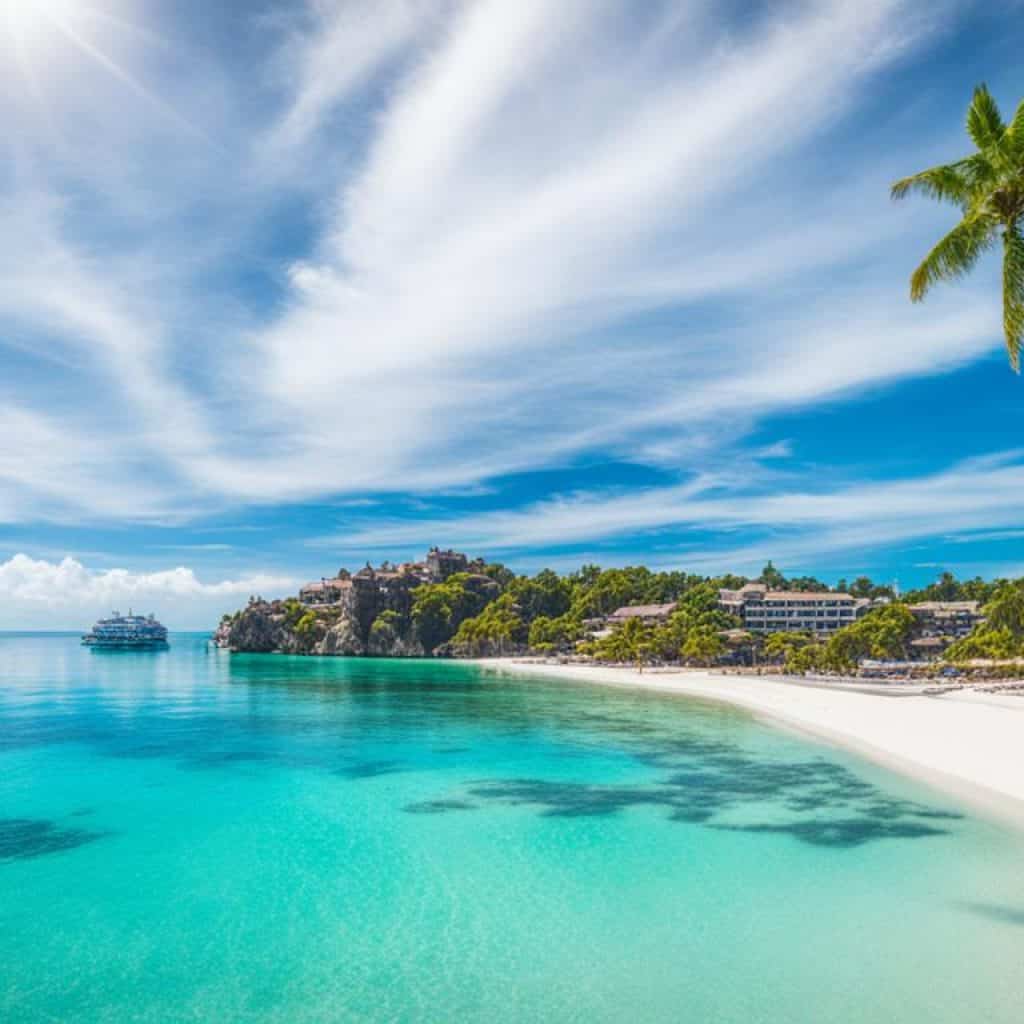
A breathtaking view of Boracay Island’s white sandy beaches and crystal-clear waters.
Pre-colonial and Contemporary Period of Boracay Island
The history of Boracay Island spans from its pre-colonial period to the vibrant contemporary era it is known for today. Let’s delve into the fascinating journey of this tropical paradise.
Pre-colonial Era: Indigenous Ati and Tumandok Communities
Before the arrival of Spanish colonizers, Boracay Island was home to the indigenous Ati and Tumandok people. These communities thrived by cultivating rice and raising goats as their primary sources of livelihood. They lived in harmony with nature, deeply connected to the island’s lush surroundings and rich resources.
“The pre-colonial period of Boracay Island was characterized by the sustainable practices and deep cultural roots of the Ati and Tumandok communities.”
Transition to a Popular Tourist Destination
In the contemporary period, Boracay Island underwent a dramatic transformation as it transitioned from an agricultural community to a renowned tourist destination. The introduction of tourism in the 1970s paved the way for significant changes in the island’s economy and infrastructure.
The natural beauty of Boracay, with its stunning beaches and crystal-clear waters, captured the attention of both local and international travelers. The island’s pristine shores became an idyllic getaway, attracting visitors seeking sun, sand, and a taste of paradise.
Boracay’s Rise as a Hub of Tourism
Over the years, Boracay Island has developed into a bustling hub of tourism, offering a wide range of modern amenities and attractions. The growth of the tourism industry has led to the establishment of luxurious resorts, world-class dining options, and exciting nightlife experiences.
Despite the rapid development, Boracay has managed to preserve its cultural heritage. The island proudly showcases its indigenous roots, offering visitors opportunities to immerse themselves in the local culture through traditional festivals, authentic cuisine, and warm hospitality.
“Boracay Island seamlessly blends its contemporary allure with its rich cultural heritage, creating a unique destination that appeals to a diverse range of travelers.”
Present-day Boracay: Balancing Development and Preservation
Today, Boracay Island continues to thrive as a tourist hotspot while navigating the delicate balance between development and preservation. Efforts have been made to ensure the sustainable future of the island, taking into consideration environmental conservation and responsible tourism practices.
Various initiatives have been implemented to protect Boracay’s natural beauty, including measures to reduce single-use plastics, promote eco-friendly transportation options, and implement sustainable waste management. These steps aim to maintain the allure of the island for future generations while safeguarding its delicate ecosystem.
Experience the cultural diversity and modern amenities of contemporary Boracay Island.
With its rich history, stunning landscapes, and vibrant culture, Boracay Island stands as a testament to the harmonious coexistence of the past and the present. It continues to captivate travelers from around the world and invites them to embark on a memorable journey through its pre-colonial heritage and contemporary charm.
Tourism Development and Environmental Challenges in Boracay Island
The breathtaking beauty of Boracay Island has made it a popular destination for tourists from around the world since the 1970s. The increase in tourism has brought rapid development and economic growth to the island, making it one of the most sought-after vacation spots in the Philippines.
However, with the surge in tourism, Boracay Island also faced significant environmental challenges. One of the major issues was the increase in coliform bacteria levels in the water, primarily caused by poor sewage and septic systems. This not only posed a threat to the ecosystem but also led to a decline in tourist arrivals in 1997.
To address these environmental challenges, the local government and concerned organizations took proactive steps. They installed a water supply system, sewage treatment plant, and solid waste disposal system, aiming to ensure the sustainable development of Boracay Island. These measures were crucial in maintaining the pristine beauty of the island and protecting its fragile ecosystem.
“Preserving the natural beauty of Boracay Island is paramount to its long-term success as a tourist destination. We need to strike a balance between tourism development and environmental conservation,” said Maria Cruz, an environmental advocate.
In 2018, Boracay Island underwent a six-month closure to rehabilitate and address the environmental challenges it faced. This closure allowed for further improvements in the sewage and septic systems, as well as additional measures to protect the island’s biodiversity.
The closure and subsequent rehabilitation efforts aimed to ensure that Boracay Island remains a sustainable destination for future generations to enjoy. It served as a wake-up call to the importance of balancing tourism development with environmental preservation.
By implementing these measures, Boracay Island is taking a significant step towards a more sustainable future. The local community, together with tourists, plays a crucial role in preserving the natural beauty and fragile ecosystem of the island. Sustainable practices, such as responsible tourism and the reduction of plastic waste, are essential to maintaining the charm and long-term viability of Boracay Island.
Tourism and Environment: Finding a Harmonious Path
| Challenges | Solutions |
|---|---|
| Increased coliform bacteria due to poor sewage and septic systems | Installation of improved water supply system, sewage treatment plant, and solid waste disposal system |
| Deterioration of the island’s ecosystem | Rehabilitation efforts including a six-month closure to address environmental concerns |
| Irresponsible tourism practices | Education and promotion of responsible tourism, reduction of plastic waste, and conservation initiatives |
The journey towards sustainable tourism in Boracay Island is ongoing. It requires a collective effort from both locals and tourists to embrace environmentally-friendly practices and ensure the long-term preservation of the island’s natural wonders.
Post-Renovation and Sustainable Practices in Boracay Island
Since the reopening of Boracay Island in 2018, there has been a renewed focus on sustainability and environmentally-friendly practices. The island has implemented various measures to reduce its ecological footprint and ensure a greener future.
Promoting Sustainable Practices
- Reducing plastic usage: Boracay Island has taken significant steps to minimize the use of single-use plastics. It actively promotes the use of reusable bags, water bottles, and eco-friendly packaging.
- Embracing biodegradable products: Businesses on the island have embraced the use of biodegradable and environmentally-friendly materials. From restaurants using biodegradable containers for takeout food to hotels providing biodegradable toiletries, efforts have been made to reduce waste.
Eco-Friendly Transportation
“Electric tricycles are now a common sight on the streets of Boracay Island. These emission-free vehicles help minimize carbon emissions and contribute to cleaner air.”
Preserving Pristine Beaches
Boracay Island is known for its stunning beaches, and efforts are being made to keep them pristine. Regular cleaning and conservation efforts ensure that visitors can enjoy the beauty of the island’s shores.
Conservation and Biodiversity
Boracay Island is home to diverse flora and fauna, and conservation efforts aim to protect its unique biodiversity. Conservation programs, reforestation projects, and protected marine areas help preserve the natural beauty of the island.
In conclusion, Boracay Island has taken significant steps towards sustainability and environmental conservation. Through reducing plastic usage, embracing eco-friendly practices, promoting clean transportation, and preserving its pristine beaches and biodiversity, the island is committed to ensuring a sustainable future. Visitors can enjoy the beauty of Boracay’s natural environment while knowing that their visit contributes to a plastic-free and eco-conscious destination.
Impact of COVID-19 on Boracay Island
The COVID-19 pandemic has had a profound impact on Boracay Island, as it has on destinations around the world. In order to curb the spread of the virus, the Philippine government made the difficult decision to close Boracay Island and the municipality of Malay to tourists in March 2020. This closure was necessary to prioritize the health and safety of visitors and residents alike.
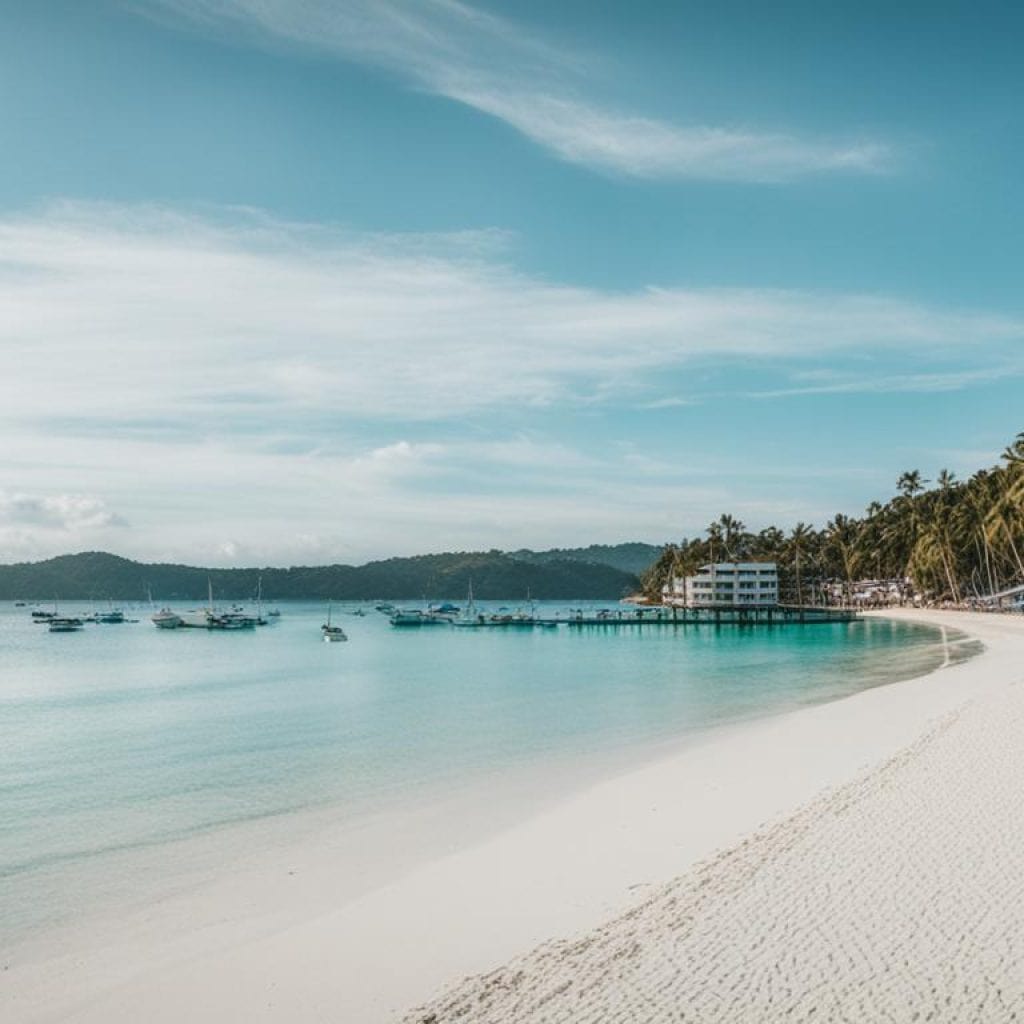
Throughout the closure, Boracay Island focused on implementing strict COVID-19 protocols to prepare for the eventual reopening. These measures included health screenings, social distancing guidelines, and enhanced sanitation practices. The goal was to create a safe environment that would allow visitors to once again experience the wonders of Boracay while minimizing the risk of infection.
As a premier travel destination, Boracay Island has always been committed to providing exceptional experiences for its guests. Despite the challenges posed by the pandemic, the island has remained resilient and adaptable, working tirelessly to ensure that the beauty and charm of Boracay are not lost.
With the easing of travel restrictions and the gradual reopening of tourism, Boracay Island has started welcoming visitors back. While the island has had to adjust to the new normal, the warm hospitality and breathtaking sights remain unchanged. Whether you’re lounging on the powdery white sand of White Beach or exploring the vibrant marine life in the crystal-clear waters, Boracay Island continues to offer an unforgettable vacation experience.
It is important to note that regular monitoring and adherence to health and safety protocols are crucial in safeguarding the well-being of both visitors and residents. By working together and following the guidelines set forth by local authorities, we can ensure that Boracay Island remains a safe and enjoyable destination for all.
| Key Points | Details |
|---|---|
| COVID-19 Closure | In March 2020, Boracay Island and the municipality of Malay were closed to tourists as part of efforts to prevent the spread of the virus. |
| Strict COVID-19 Protocols | Boracay Island implemented health screenings, social distancing guidelines, and enhanced sanitation practices to ensure the safety of visitors and residents. |
| Resilience and Adaptation | Despite the challenges, Boracay Island remained resilient and adaptable, focusing on maintaining its beauty and charm while prioritizing health and safety. |
| Gradual Reopening | As travel restrictions ease, Boracay Island has started welcoming visitors back, providing them with unforgettable experiences while ensuring their safety. |
| Importance of Adhering to Protocols | Regular monitoring and adherence to health and safety protocols are crucial to maintaining a safe and enjoyable environment for visitors and residents. |
Conclusion
Boracay Island, located in the Philippines, is a tropical paradise renowned for its stunning beaches, crystal-clear waters, and vibrant culture. Its white sandy shores and breathtaking views have earned it recognition as one of the best islands in the world. Despite facing environmental challenges, the island has undergone rehabilitation and implemented sustainable practices to protect its natural beauty.
Visitors to Boracay can enjoy a range of attractions, from the famous White Beach to the thrilling water sports at Bulabog Beach. The island also hosts vibrant festivals like the Boracay Ati-atihan, where visitors can immerse themselves in the rich cultural heritage of the Ati people.
But it’s not just the beautiful landscapes and cultural experiences that make Boracay special. The warm hospitality of the locals adds to the charm of the island, making every visitor feel welcome and at home. Whether you seek relaxation, adventure, or cultural immersion, Boracay Island offers a destination like no other.
Plan your trip to Boracay Island and discover the magic of saan matatagpuan ang boracay island. It’s a destination that will leave you with unforgettable memories and a longing to return.
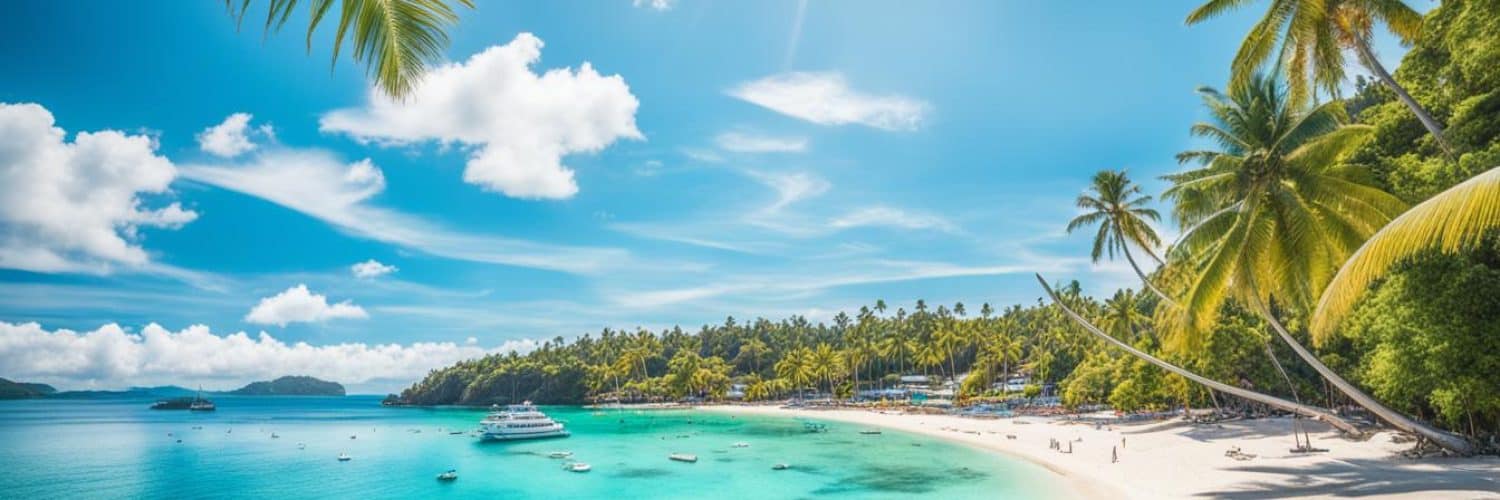

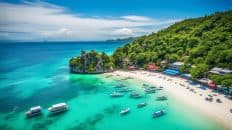
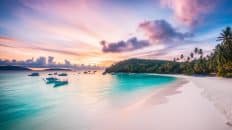














Add comment